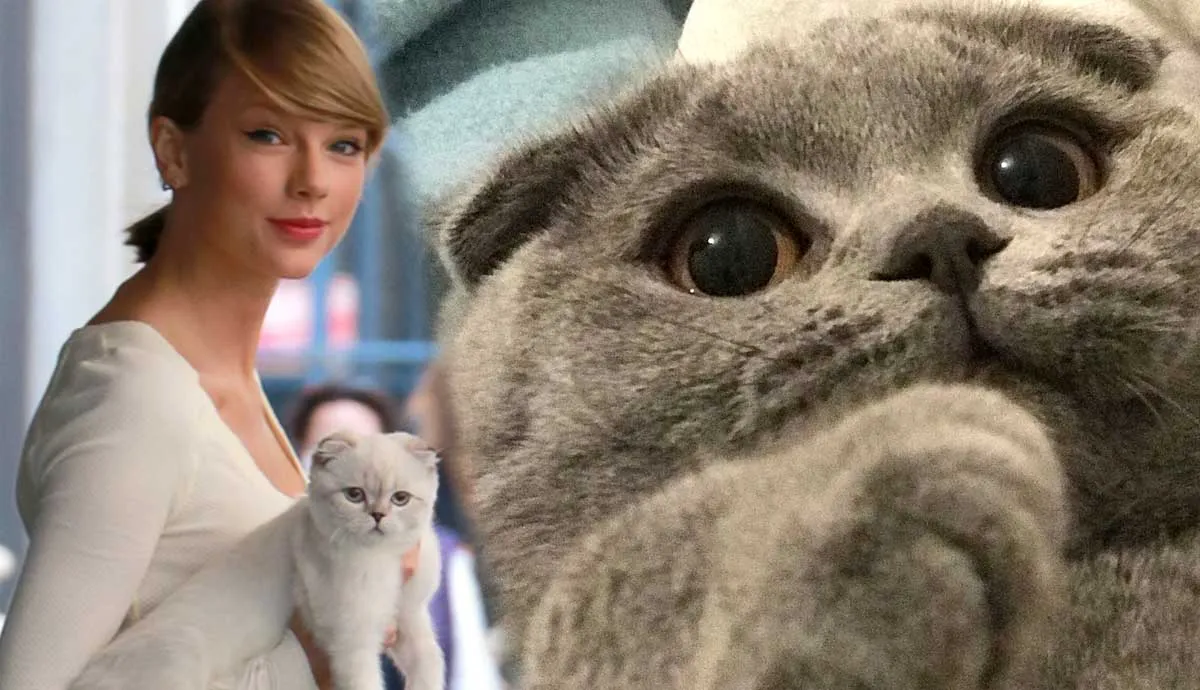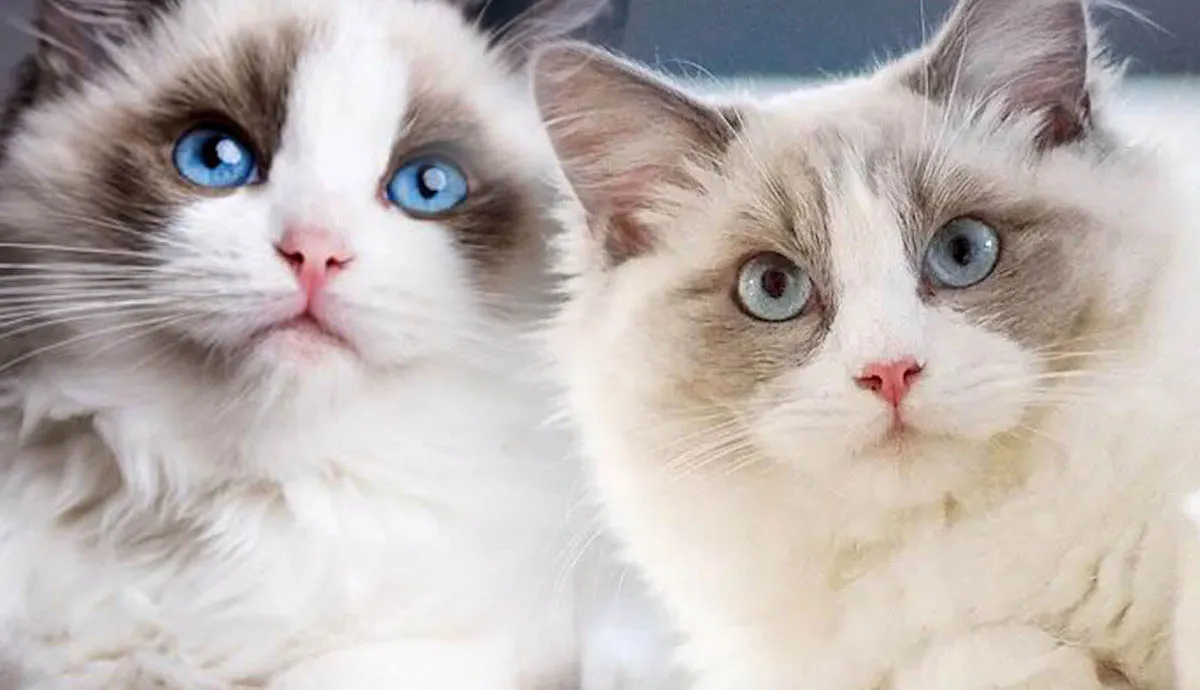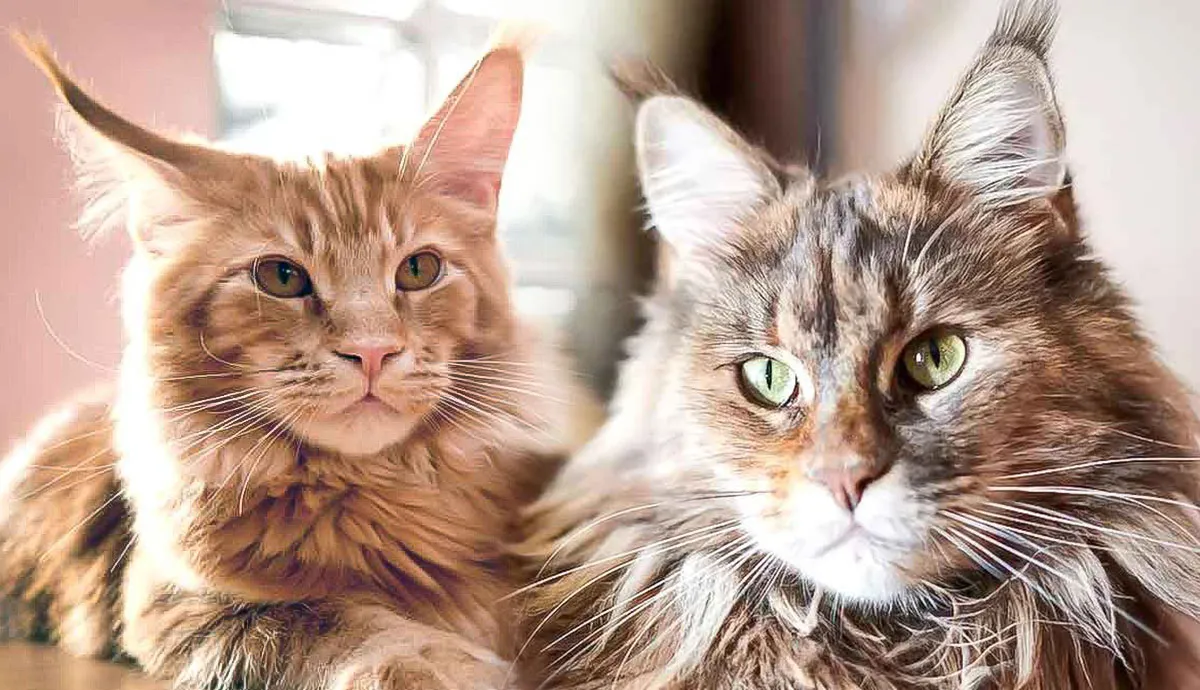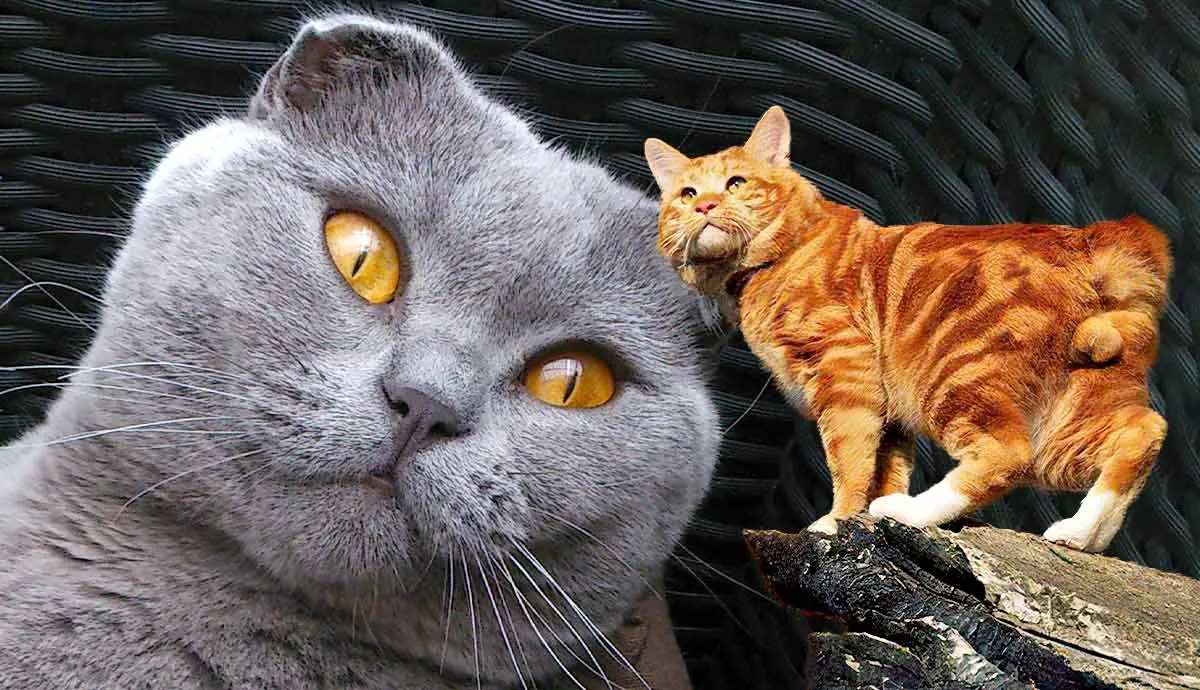Come along on a journey to the land of the Vikings, snow, fjords, and lush forests — the home of the Norwegian Forest Cat. They are affectionately known as ‘Wegies.’ They are breathtakingly beautiful cats with a big build, dense, weatherproof coats, and affectionate personalities to match their size. They are friendly cats who love making friends and are adaptable to family life with children and other pets.
History and Origins
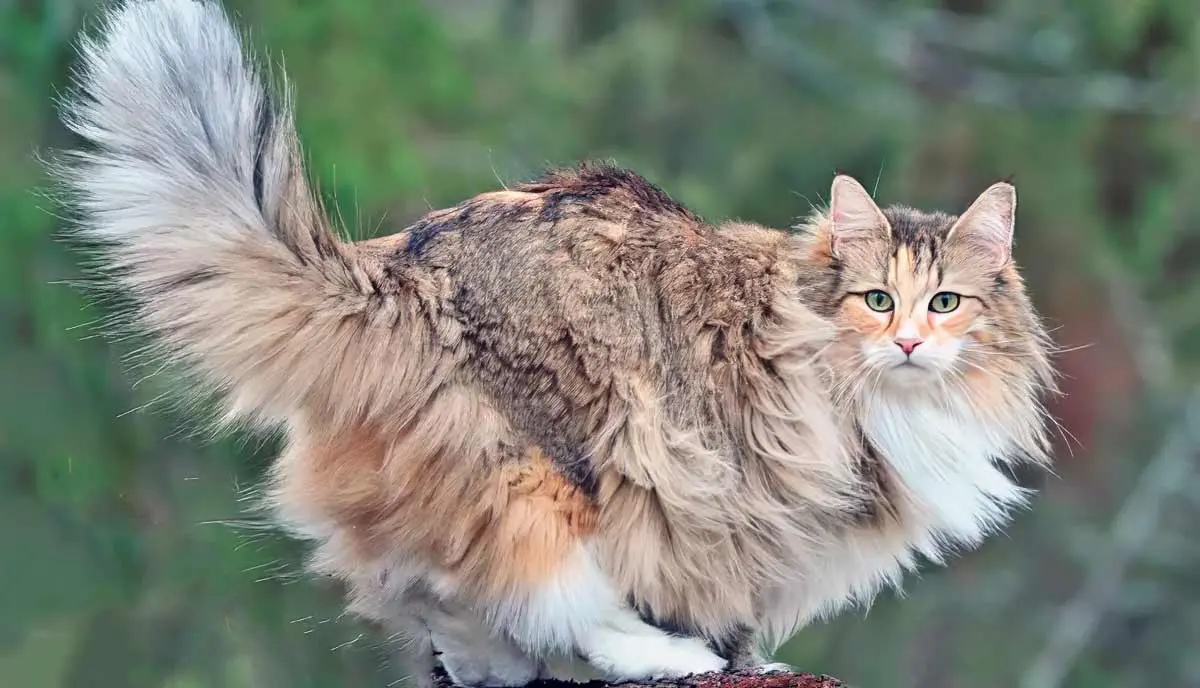
While we don’t know these majestic cats’ detailed history or ancestry, their record is slightly enigmatic as it befits a cat known in old Norse myths and legends. In its native northern European homelands, the Norwegian Forest Cat is known as the Skogkatt (literally ‘forest cat’). The Viking explorers took them along on sea voyages to clear the ships of rodents, a task they performed equally well at home in the barns.
The breed faced the risk of dying out during the early twentieth century. During WWII, breeding efforts were interrupted, and crossbreeding with other feral and domestic cats nearly led to the breed’s decimation. Breeders worked hard to save them in the aftermath of the war. Wegie breeders and fanciers in Norway instituted a breeding program in the 1970s to protect the breed. They even carry a royal seal of approval! King Olaf V (1903–1991) designated the breed as the official cat of Norway. Quite the pedigree, we’d say!
Living With a Wegie
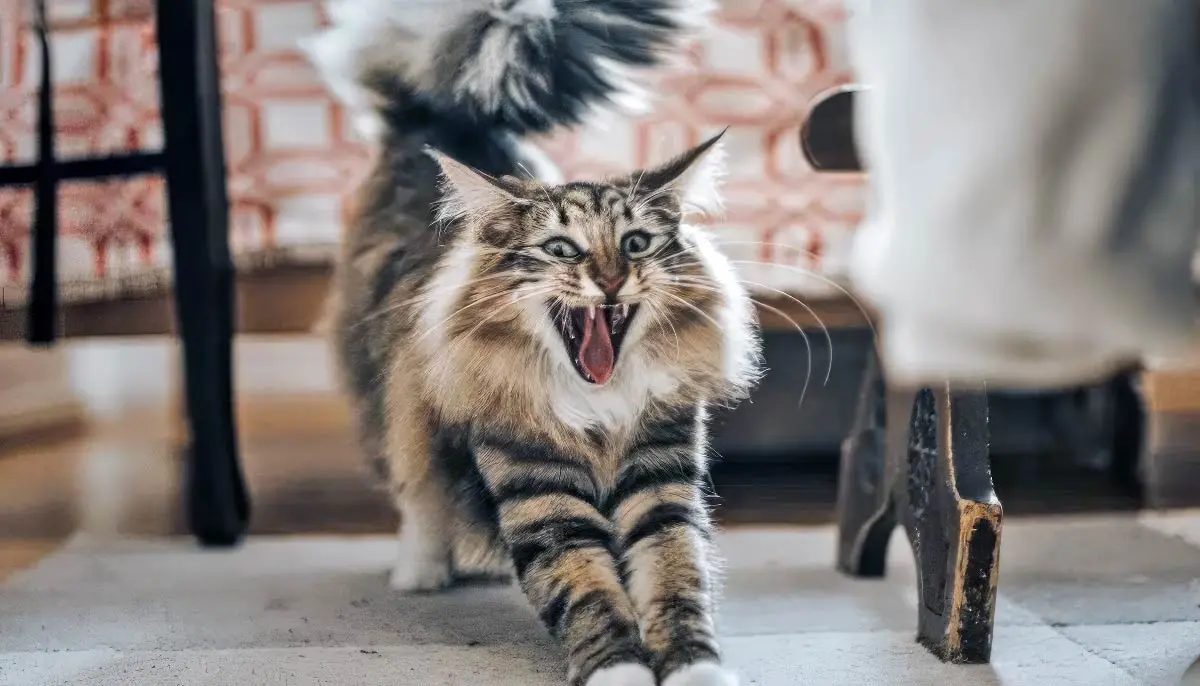
In cat terms, Norwegian Forest Cats take a long time to mature (shall we say manifest?) into their adult form — around four or five years. So, you’ll have a playful ‘overgrown’ kitten for a long time! But, apart from their playful nature, they are also known as gentle giants. Despite their size, they are peaceful and gentle with all family members, from small children to gran and gramps. They even like sharing their living environment with other small animals like cats, dogs, and other pets in and around the house. Although they look wild, they are devoted cats that attach themselves to the household members.
Your gentle giant will also need to be stimulated physically and mentally — they are expert tree climbers and love jumping. Purchase or build the tallest cat tree you can afford to allow them to climb, jump, and enjoy themselves. Hunting games are also important, so having toys they can chase around the house is a great idea. Their playful instinct and muscular bodies make them excellent playmates for children. Still, they have to be correctly socialized while growing up, and children should also be taught to treat the cat with respect and gentleness.

Like any other cat, they seek attention on their terms. They like their ‘alone time’ and engaging with the family. Although they might not be directly involved in what you’re doing and aren’t as involved in your activities as their cousin, the Maine Coon, they like to be near their humans. Despite their playful and friendly nature, they are not suited to overly busy households with streams of guests or boisterous children. Generally, they’re not lap cats because they tend to overheat quickly but will gladly sit next to you, and they adore affection and attention.
They love talking to their humans but aren’t needy and don’t require constant attention. They can be left alone during the day if you work outside the home, but contacting a reputable breeder for a companion Wegie is recommended. If you live on a farm, your cat will be in its element – during the day, they’ll inspect and rule their kingdom, and at night they’ll gladly curl up on your lap or the sofa. They can be indoor-only cats too, but you’ll need a cat tree and many toys to satisfy their curiosity. If you have a yard, cat-proof fencing is a must to keep your ball of muscle and fur safely inside. A catio is another excellent way to allow them a safe space to play and frolic.
Grooming and Feeding Requirements
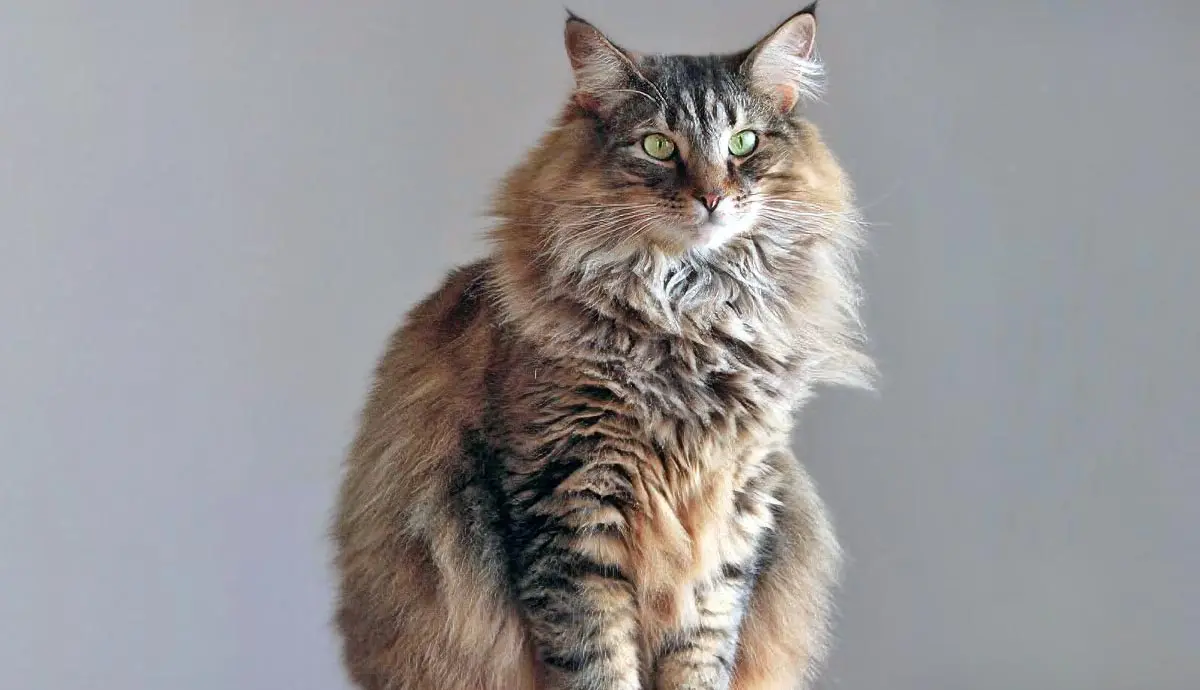
These unique cats feature a soft undercoat and a long coat. The combined coat is essentially waterproof. They primarily care for their coats through grooming, but if you want to be safe, a good brushing once a week will prevent the soft undercoat from felting. They will lose their winter coat in spring, and daily brushing is advised.
A special cat food designed to help with hairball control is advised. A combination of wet and dry food in the right quantities will help your kitty stay healthy and not gain weight. With the proper nutrition and care, your gentle giant’s lifespan can easily reach 15 years (and sometimes beyond that). Remember to keep malt paste on hand or provide them with a patch of cat grass to help them with hairballs. Your cat needs fresh water to aid digestion and pass the odd hairball when it happens.
Overview and Concluding Remarks
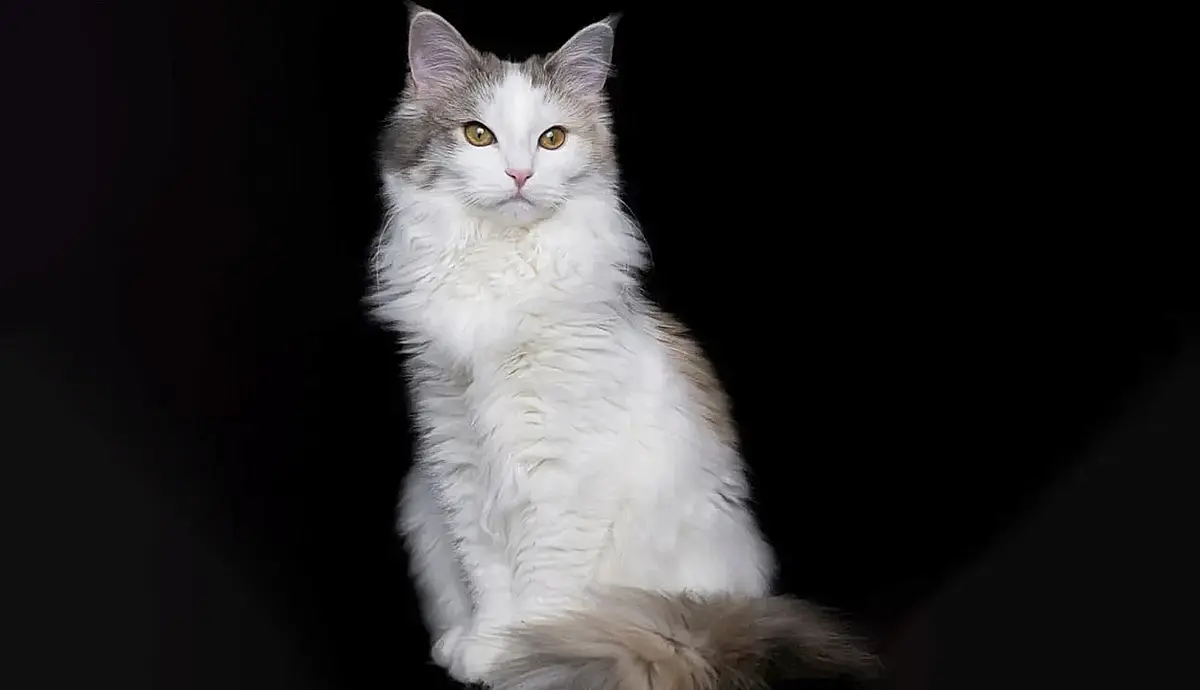
Below are some of the main characteristics of Norwegian Forest Cats:
| Family-friendly | 2–3/5 |
| Playfulness | 3/5 |
| Intelligence | 3–4/5 |
| Grooming requirements/shedding | 4/5 |
| Likes living with other pets | 4/5 |
| Known health issues | • hip dysplasia • glycogen accumulation disease (glycogen type IV) — close to diabetes • heart disease • chronic renal insufficiency — decreased kidney function |
| Lifespan | Between 14 and 16 years |
| Size | Large, between 5.8 and 10 kg (12.8–22 pounds) |
| Coat color and pattern | Sixty-four acknowledged coat colors are recognized, and they can come in turtle, tabby, smoky, solid, and bicolor patterns. |
| Coat length and thickness | Semi-long hair and coat thickness depends on the season |
These gentle giants are great cats for first-time cat owners looking for an affectionate cat that’s not ‘clingy’ or too high maintenance. Although they may come across as shy cats, their high intelligence and inquisitiveness make them excellent playmates. They love their human and animal housemates and will react surprised and might slightly withdraw when schedules are suddenly disrupted. They are territorial cats and will patrol the house several times daily to ensure all is going well in their kingdom.


